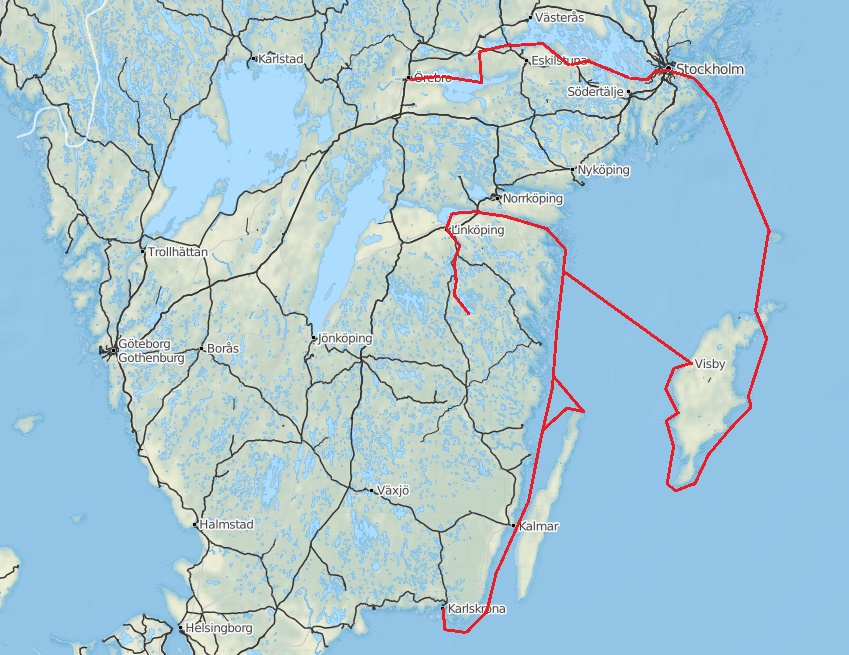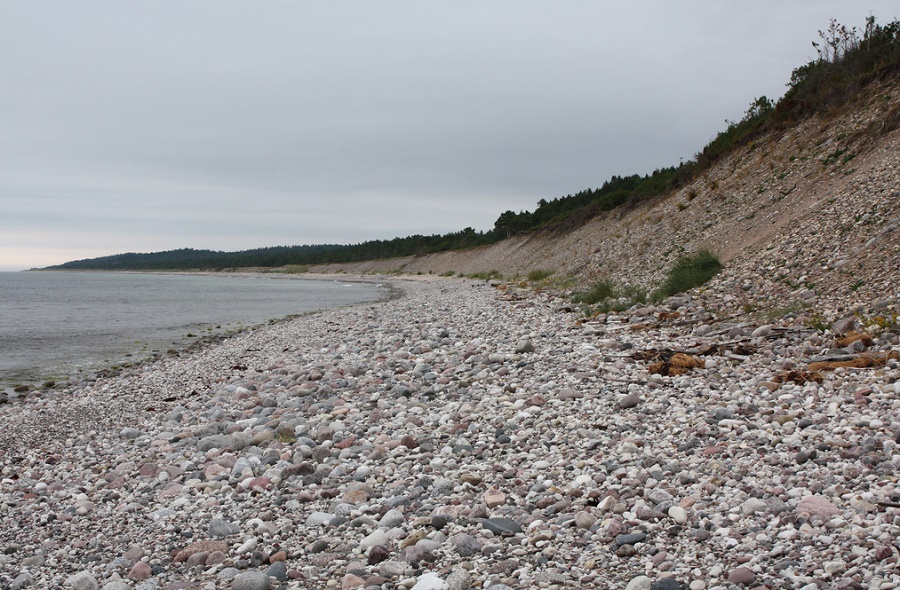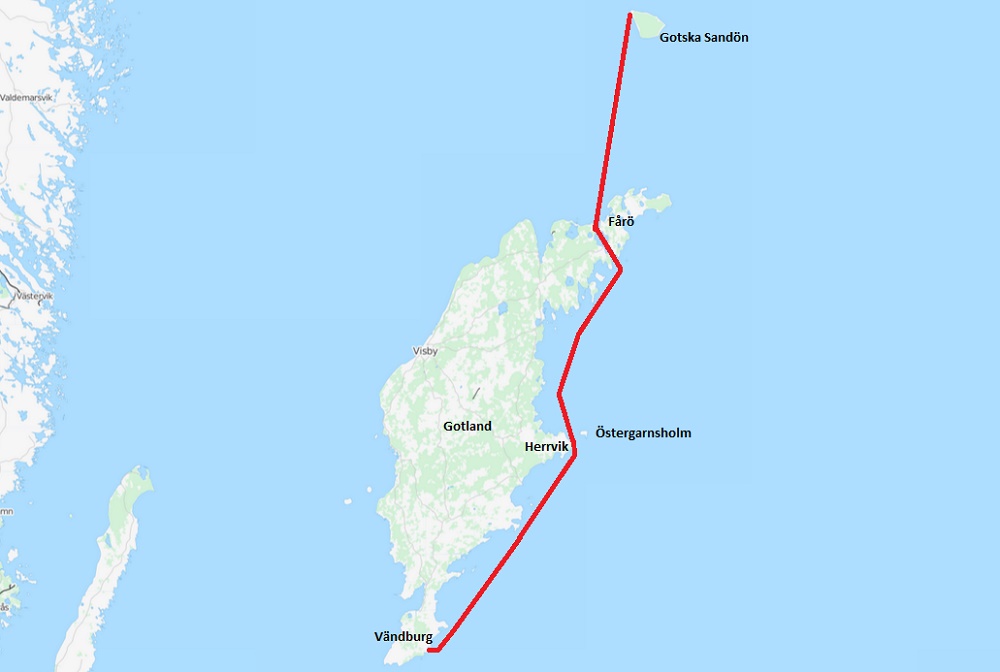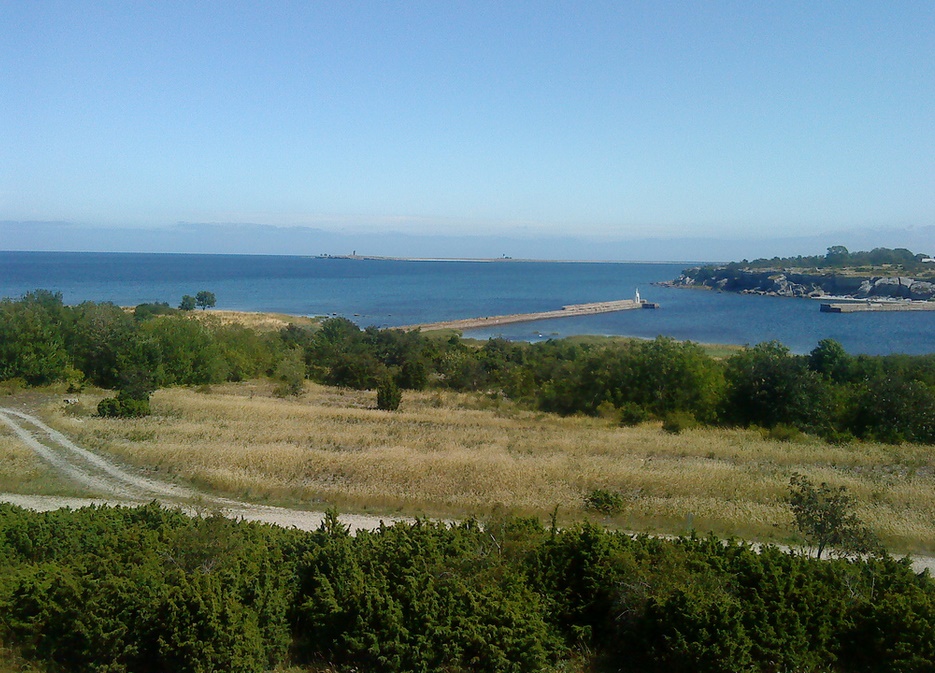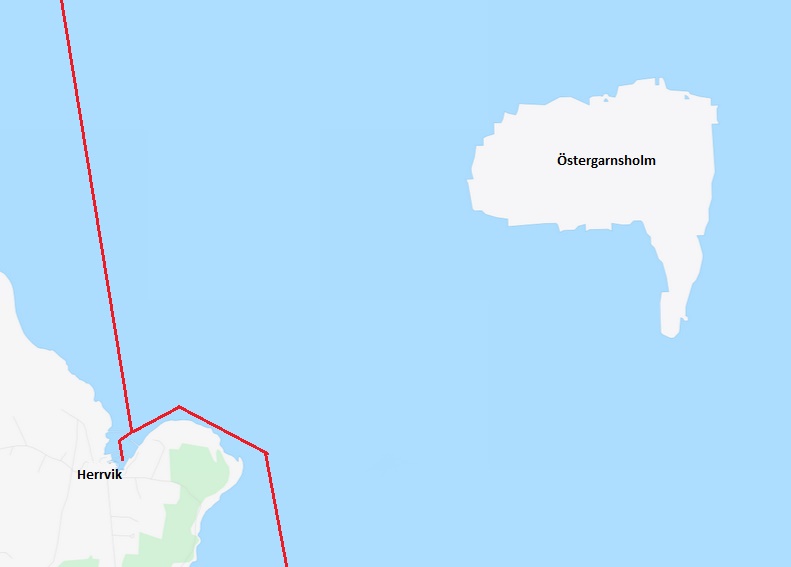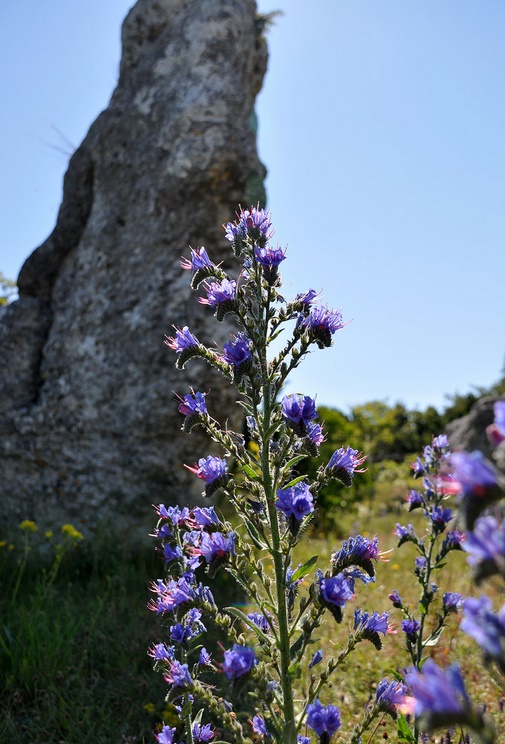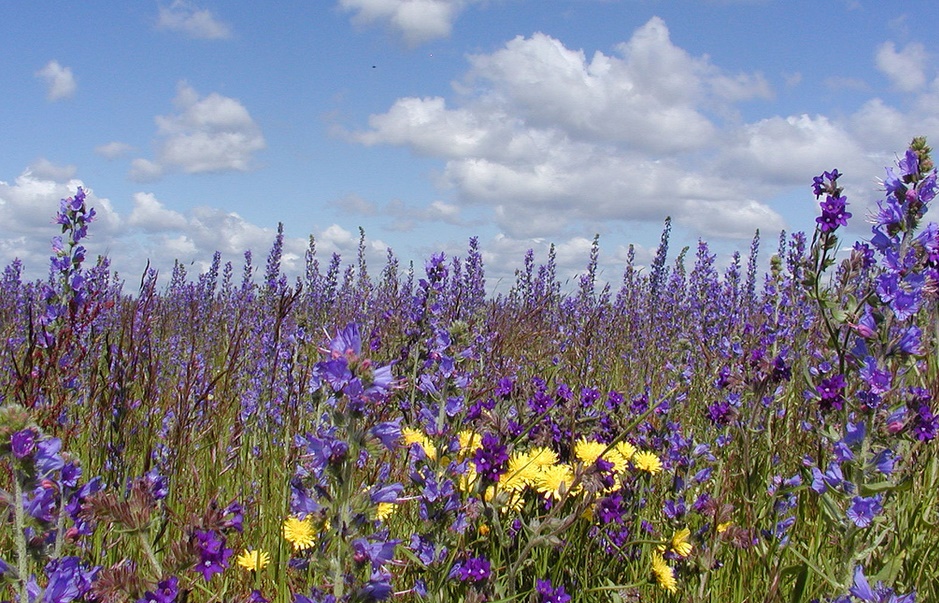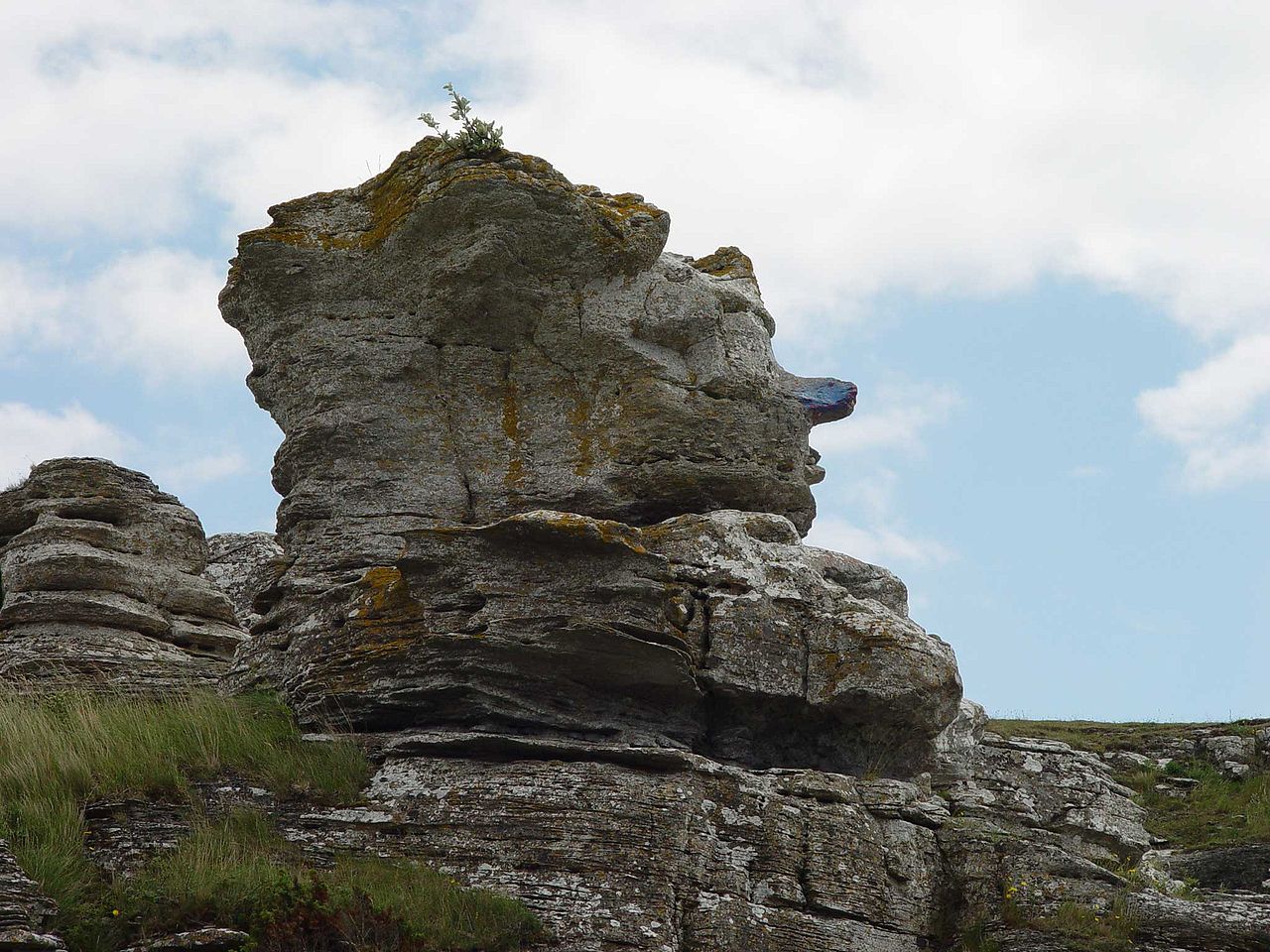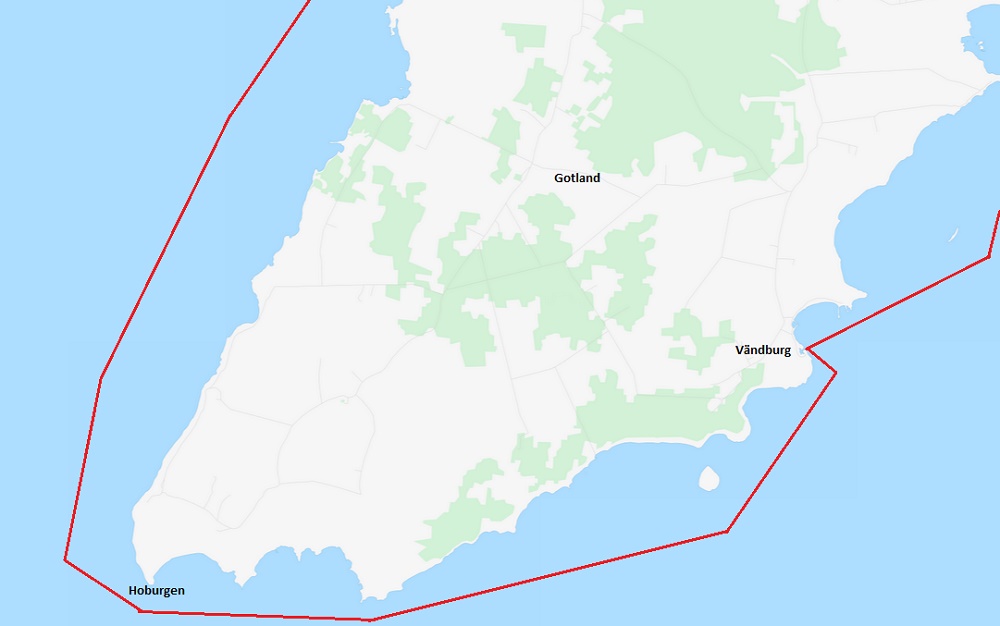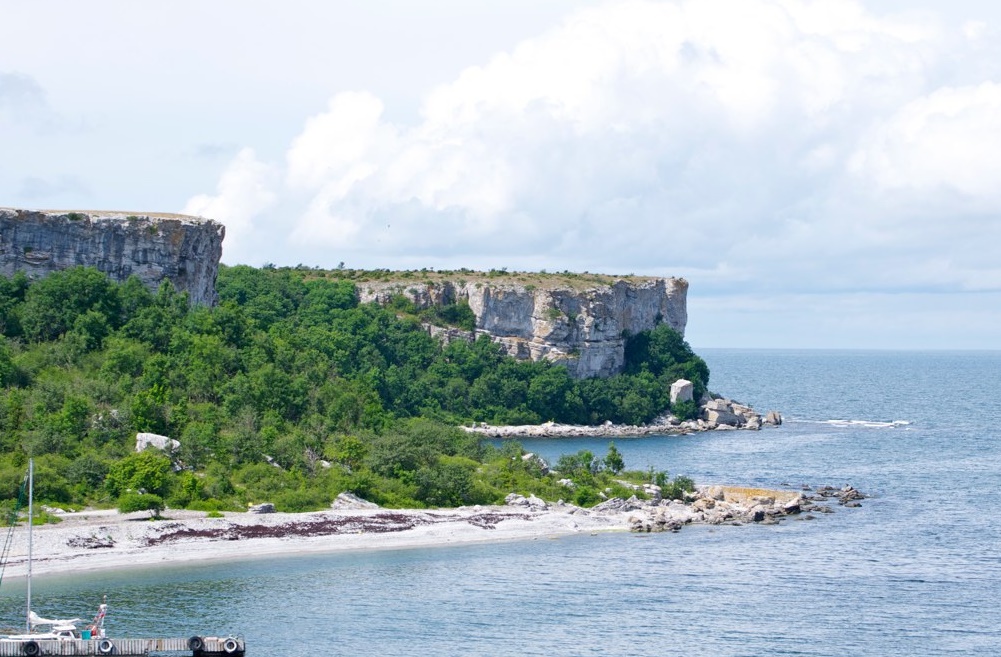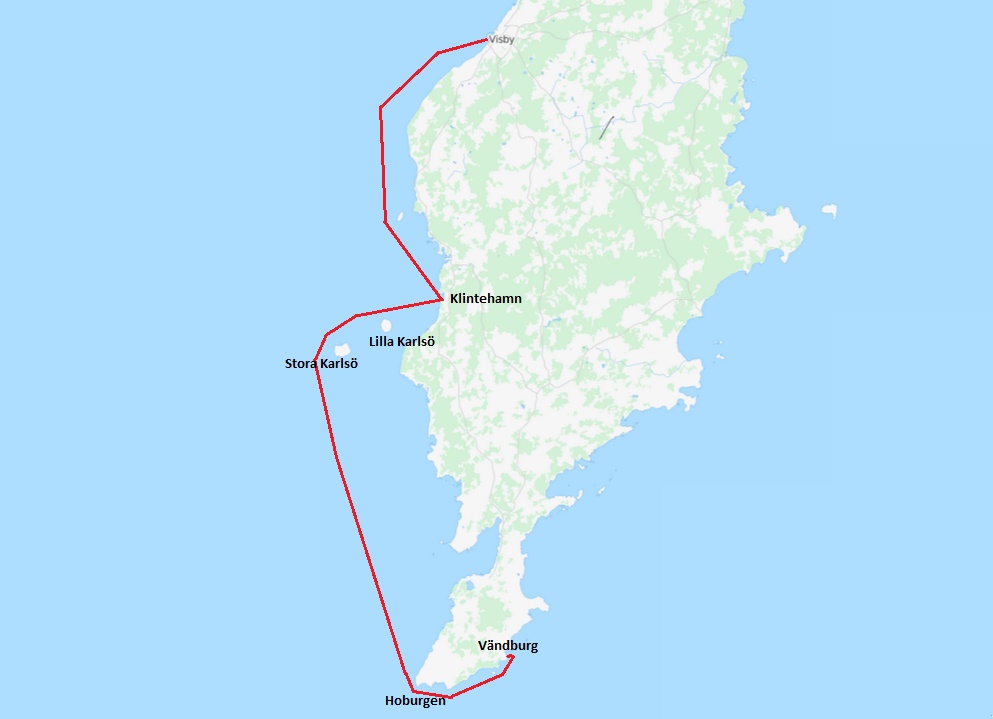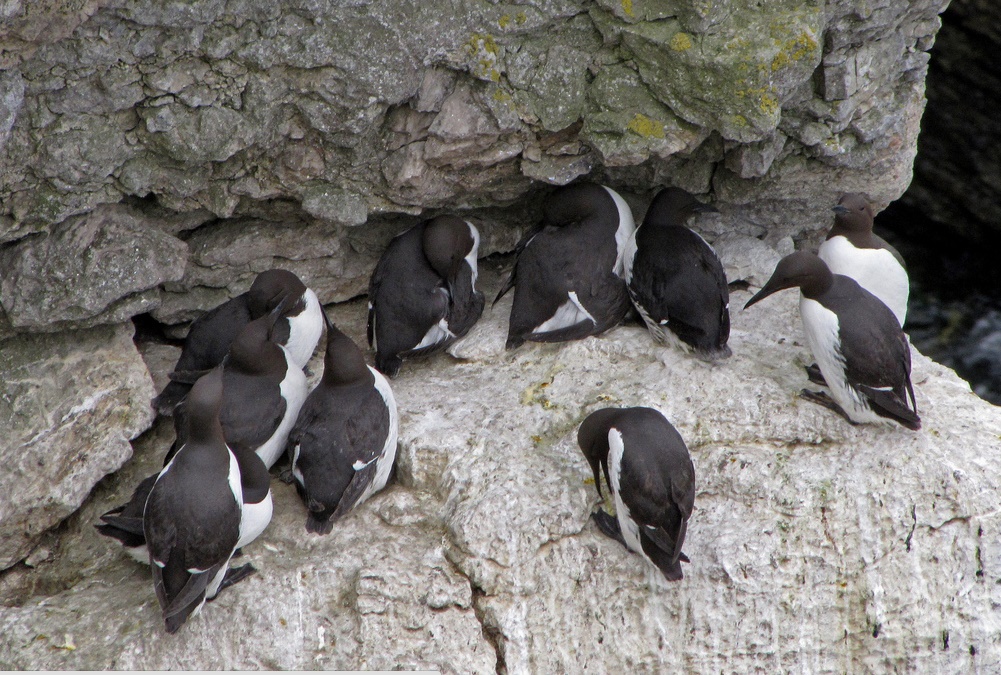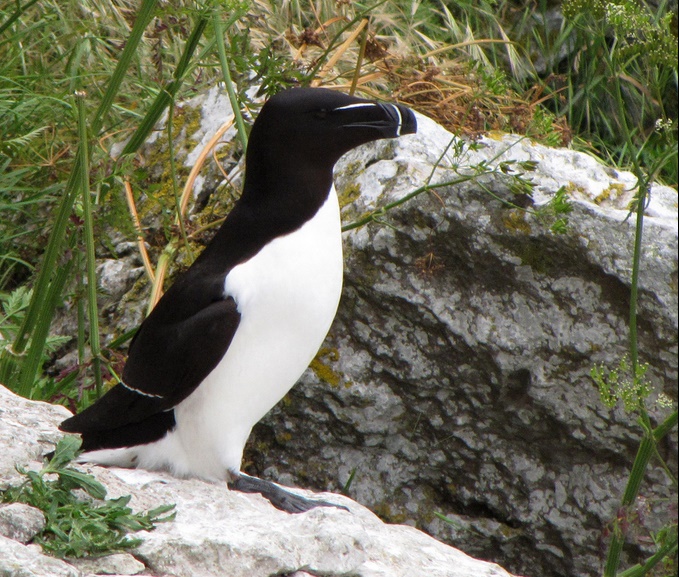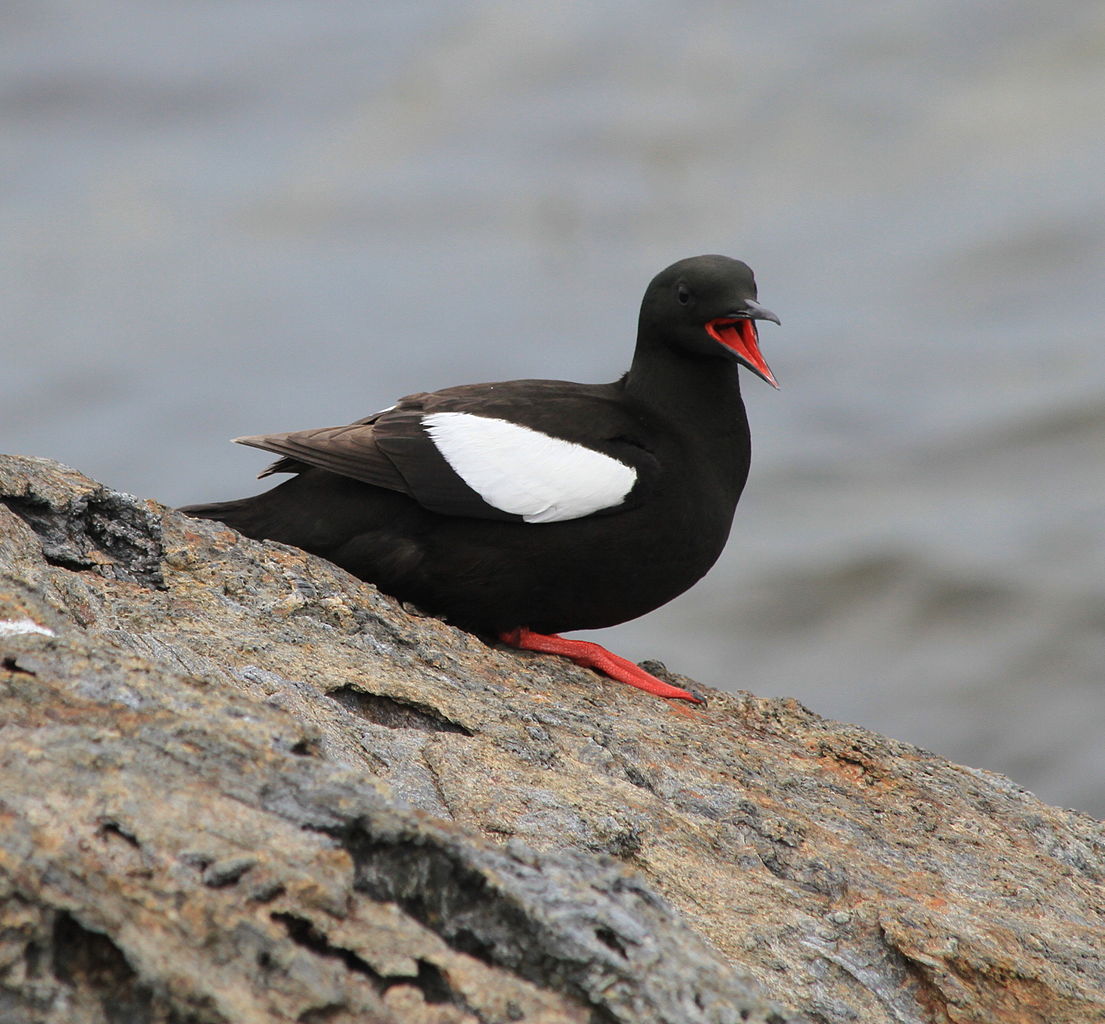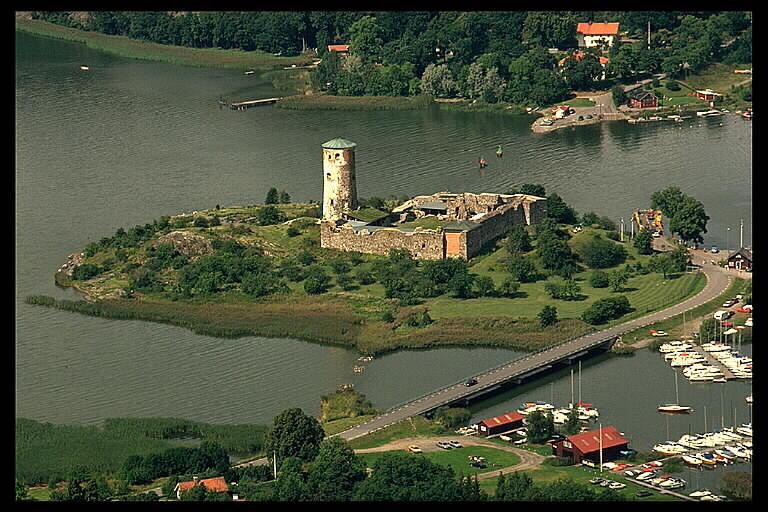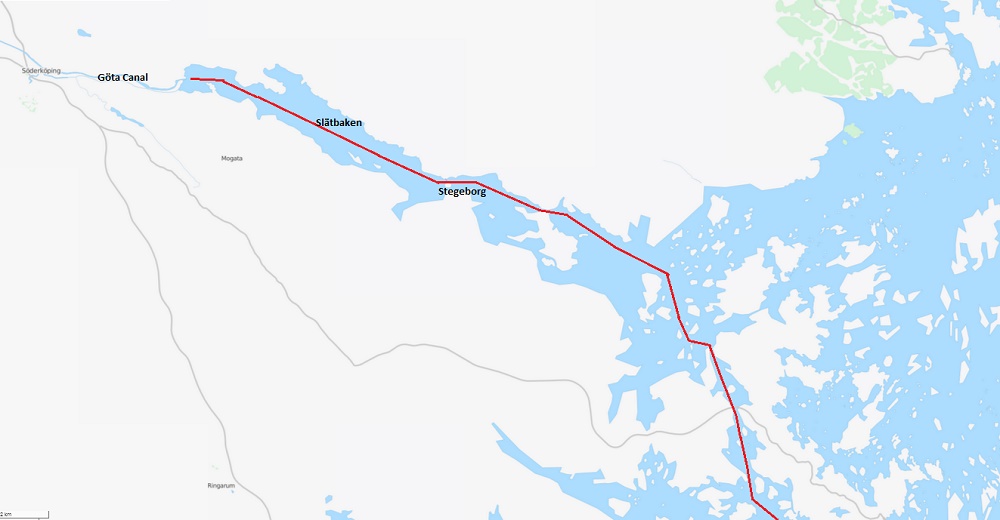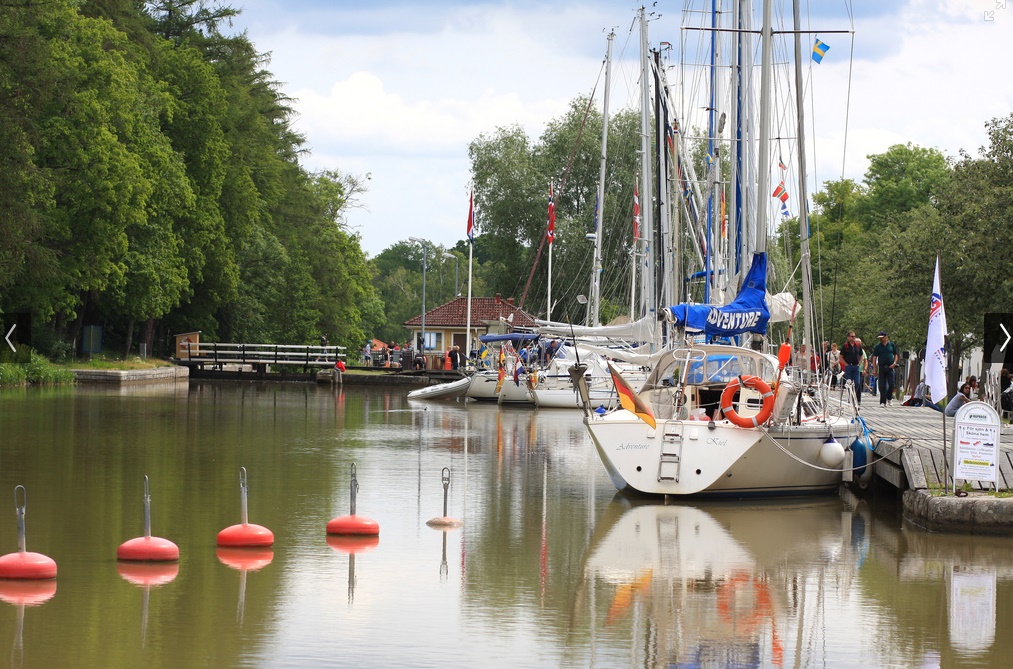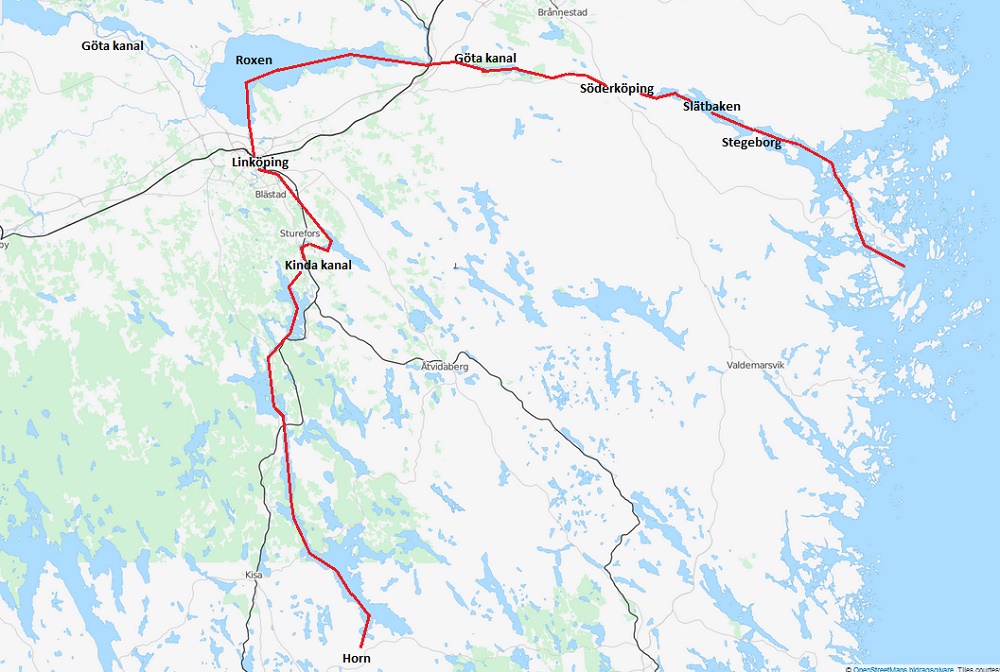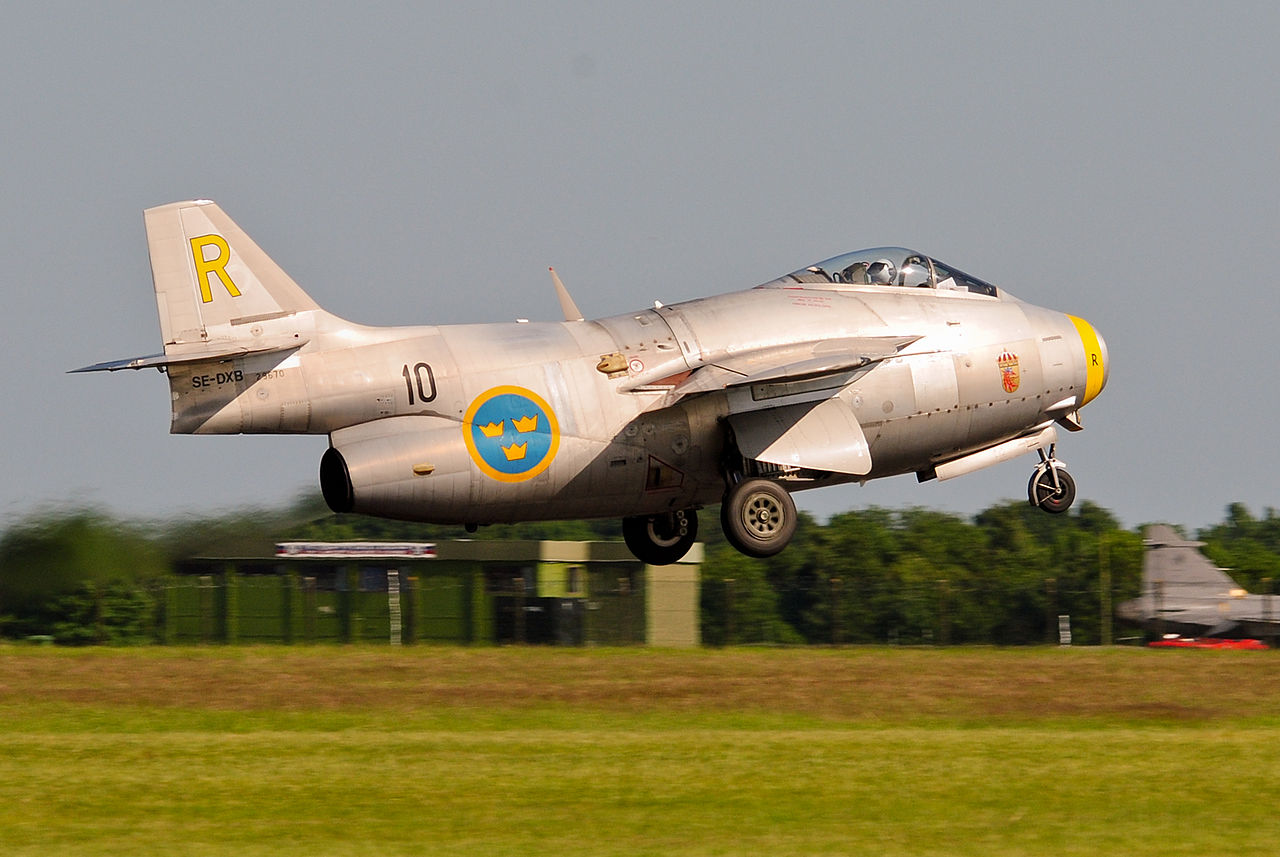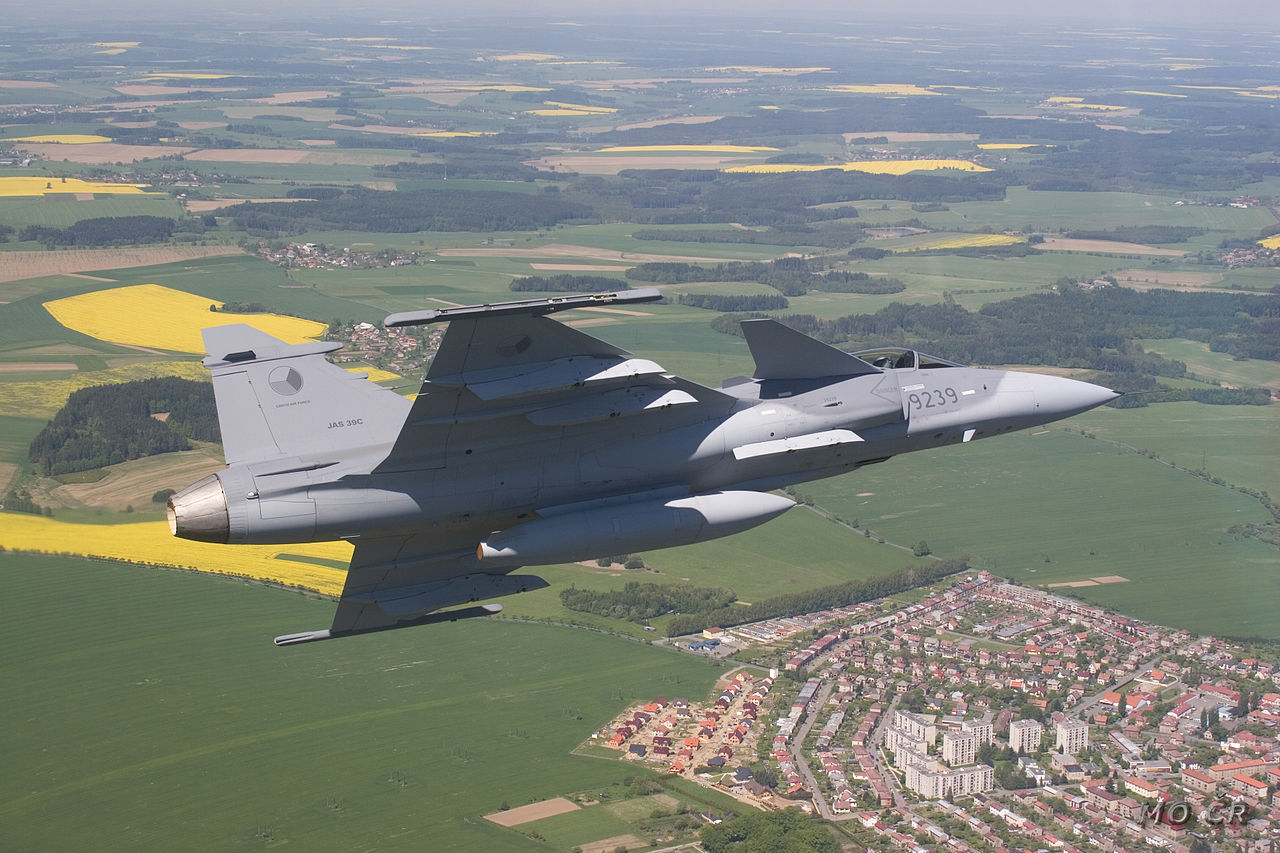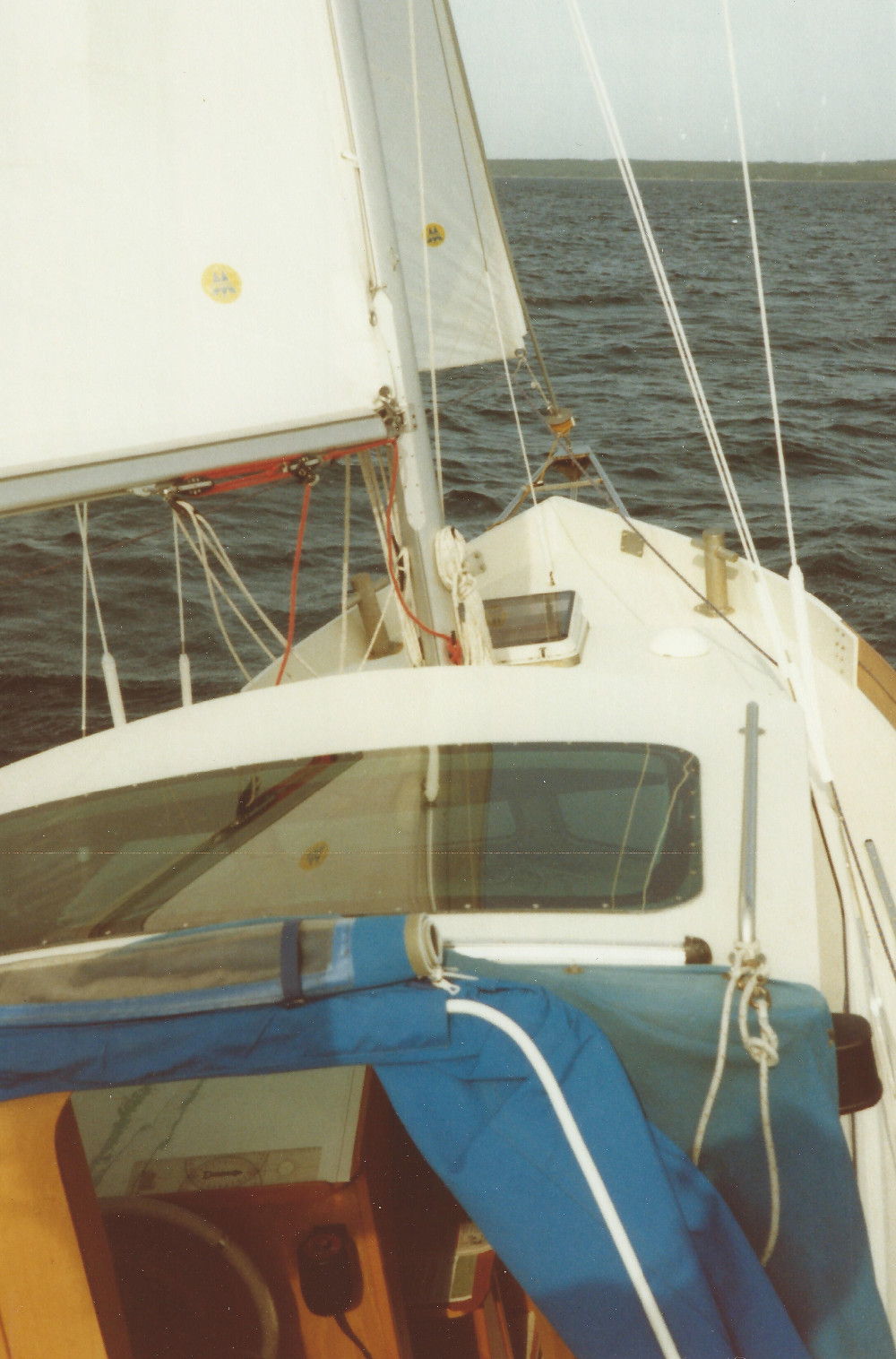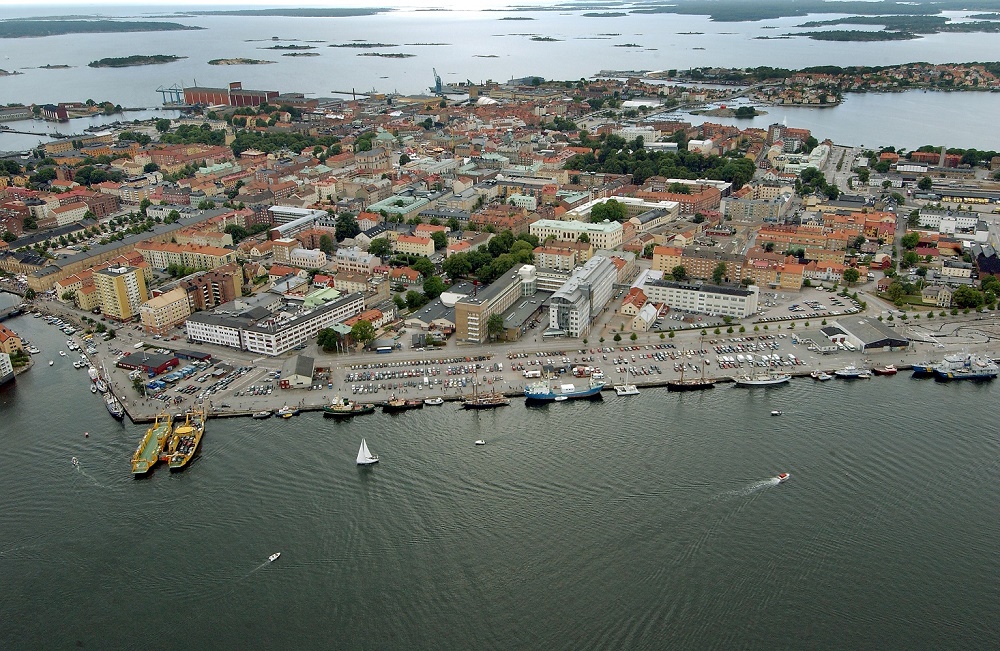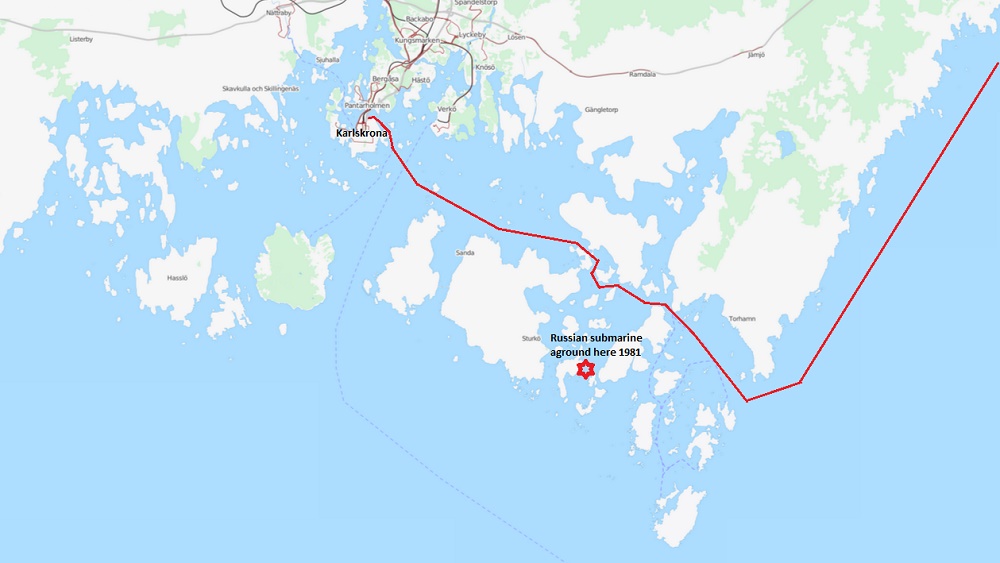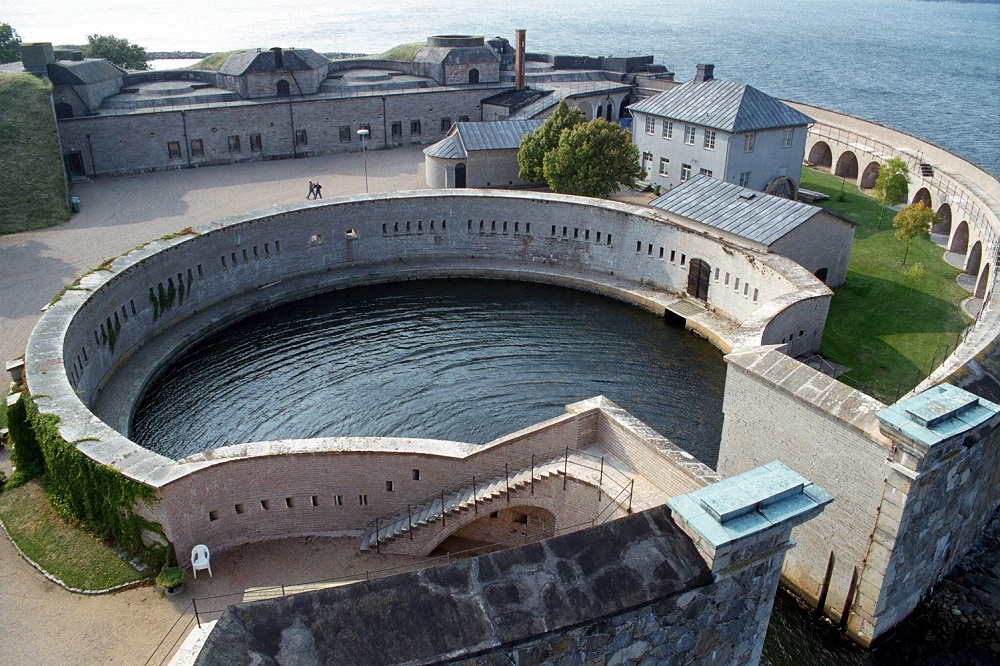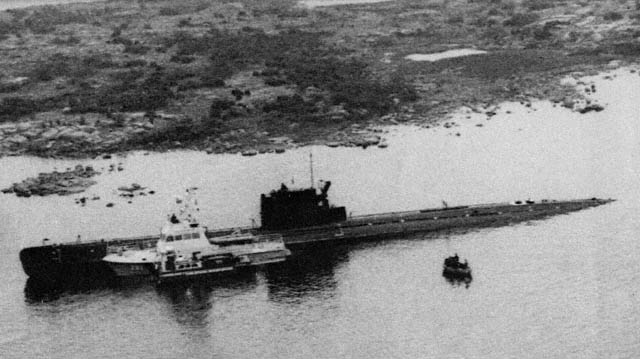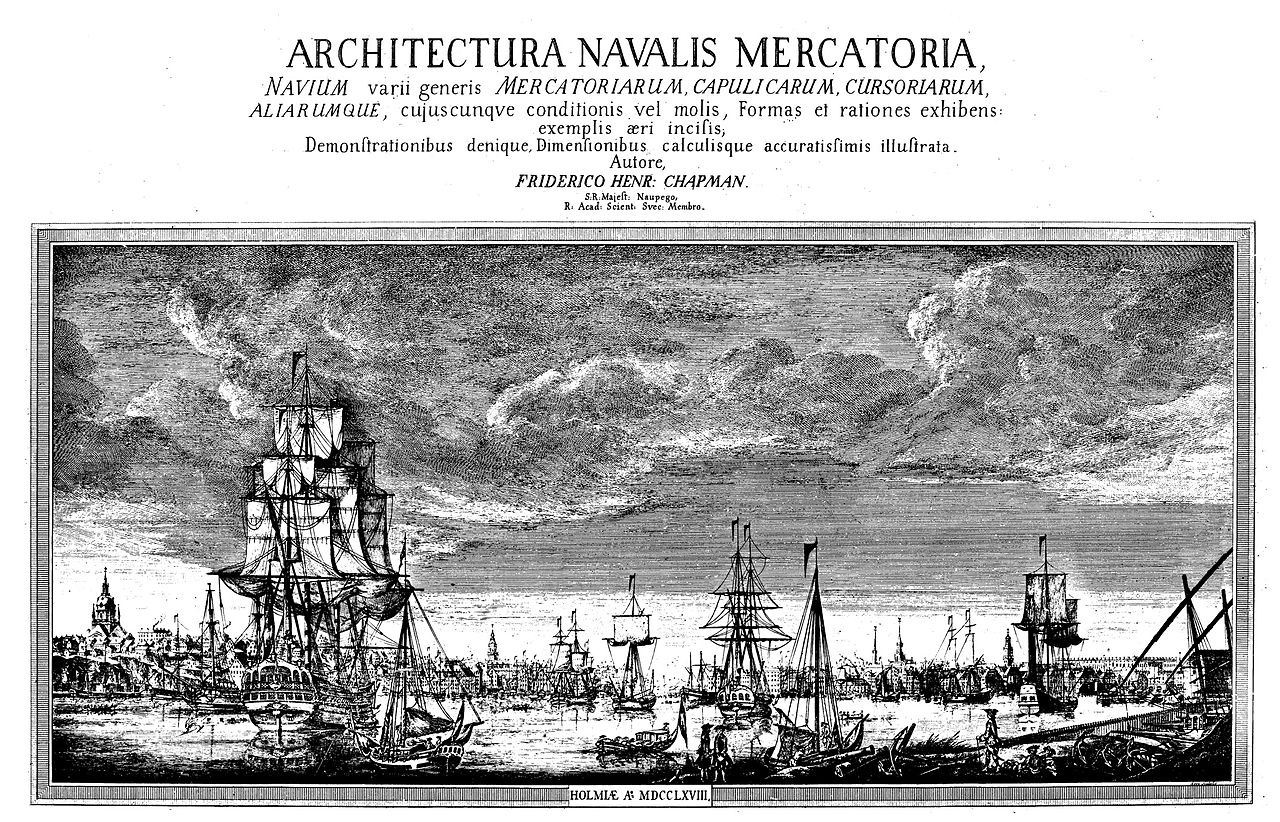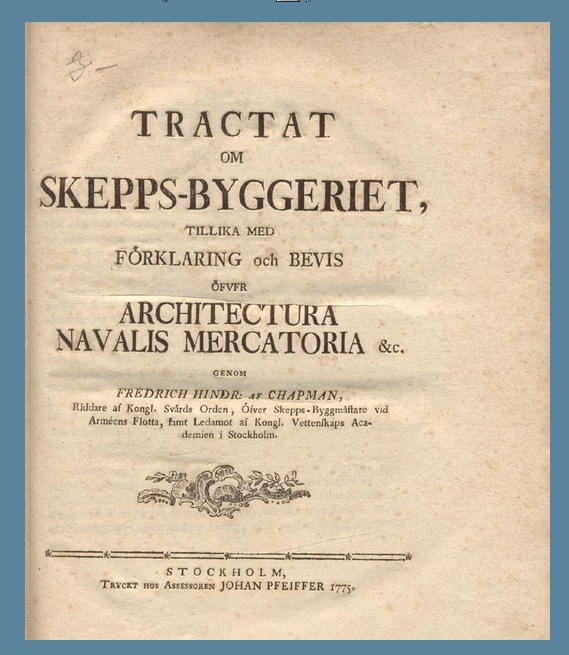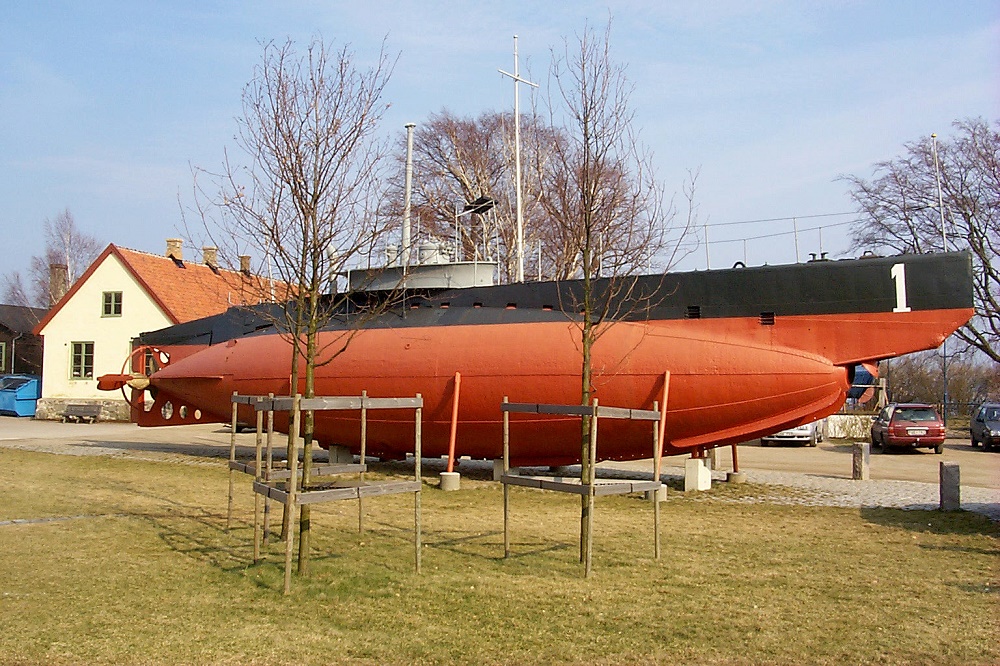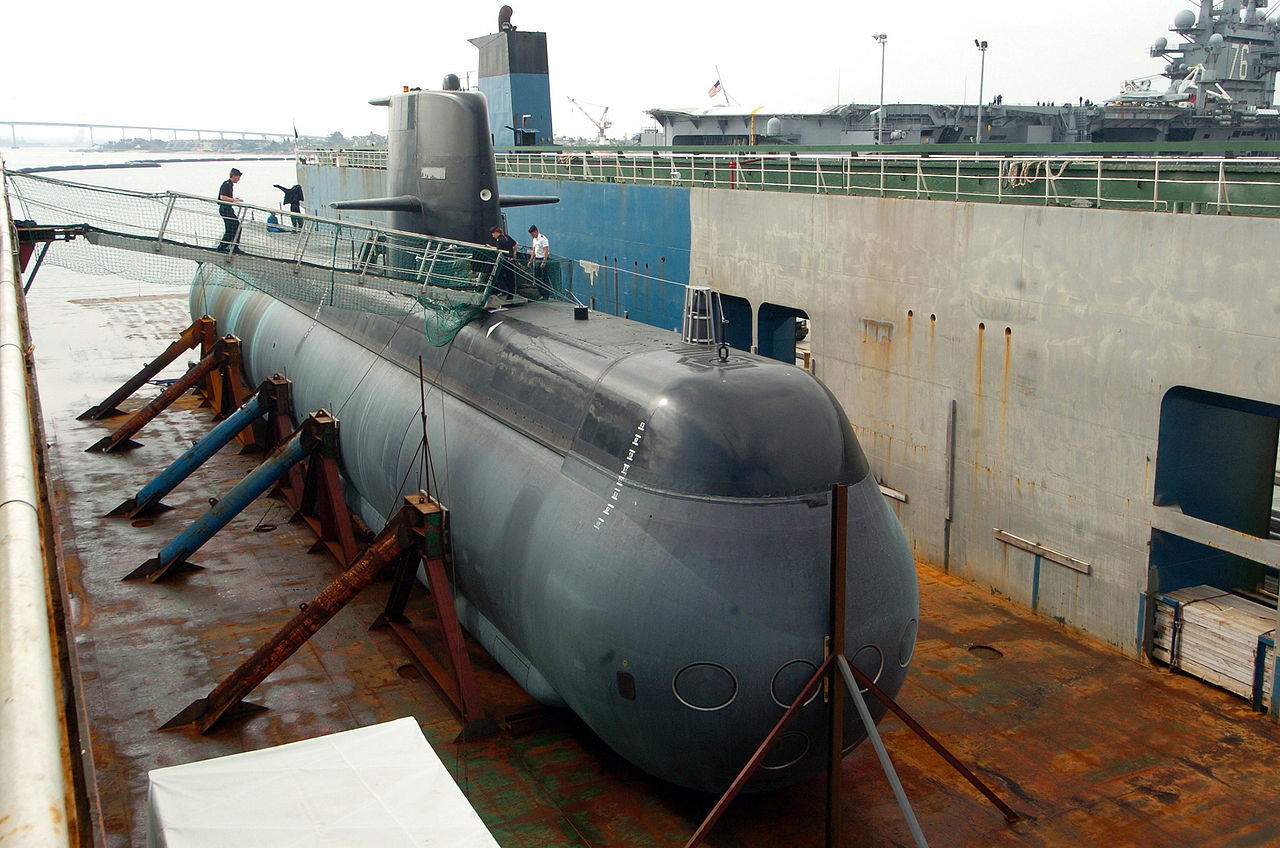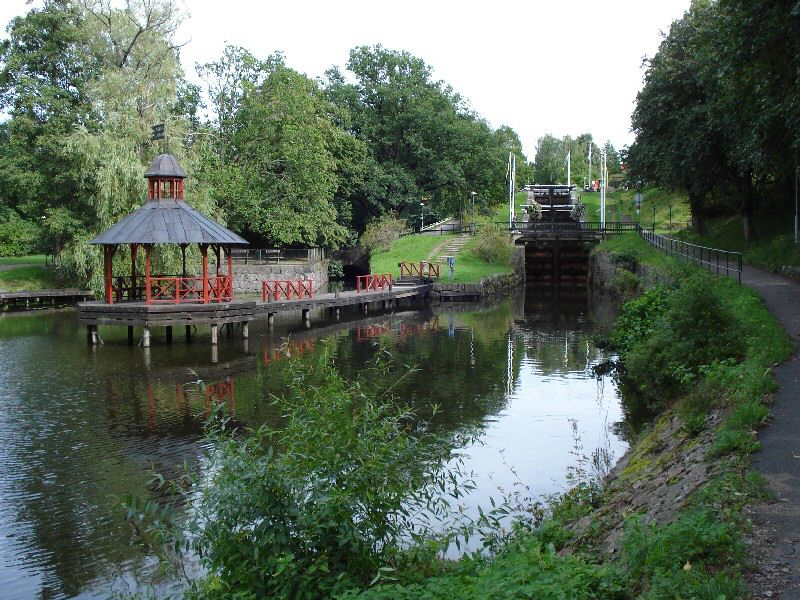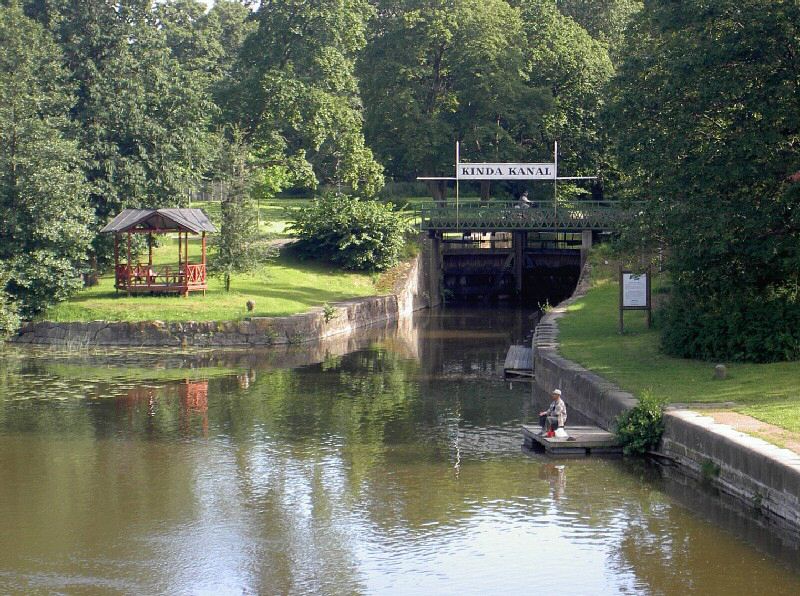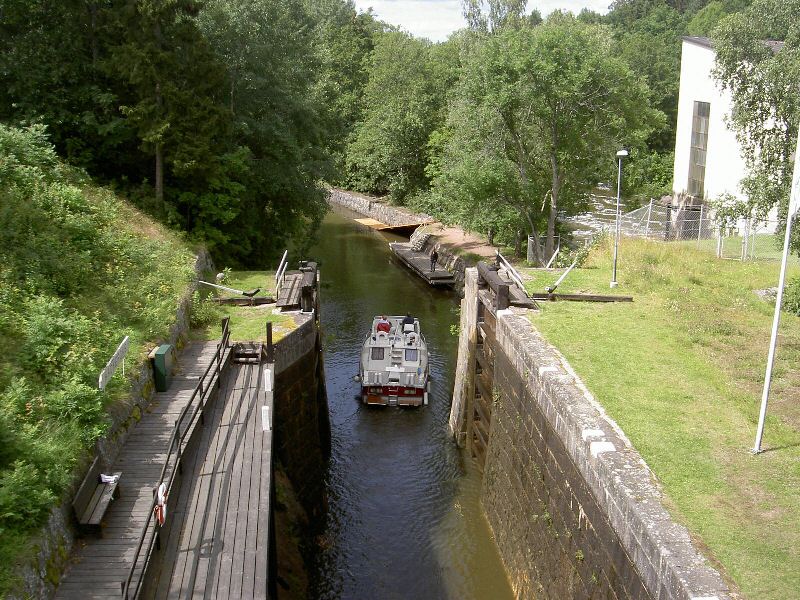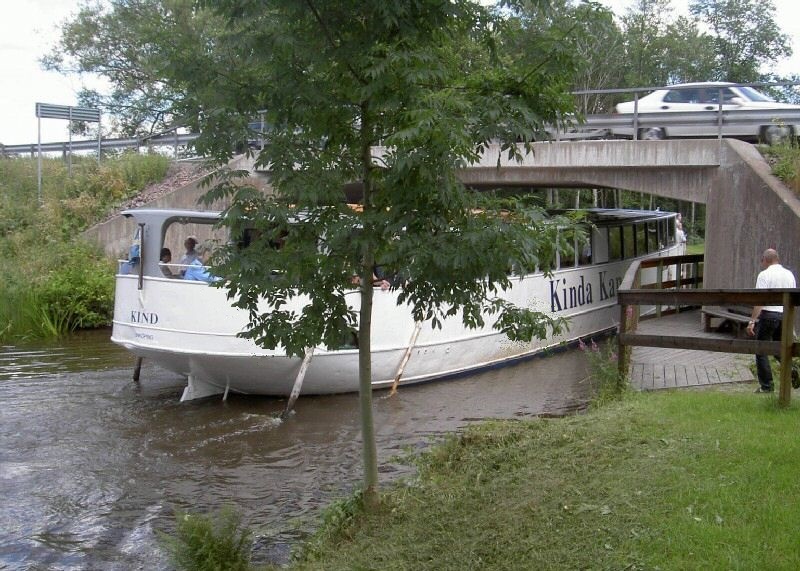
 1983
1983


Gotland, last year with Etoile
Örebro, Stockholm, Gotland, Karlskrona and Kinda Canal by Johan Kjellander 2014
After last years long trip to England I now felt that the Baltic would be enough. With different crews I sailed to Gotska Sandön and around Gotland on the east side, then south along the Swedish coast to Karlskrona, up to Linköping by Göta Canal and finally a trip on Kinda Canal before I delivered Etoile to her new owners in Mem by the end of the season. During the five years I had Etoile I sailed her 6700 NM.
Gotska Sandön and around Gotland
Gotska Sandön, west beach, photo by Tanya Hart, © CC-BY-SA 2.0
Gotska Sandön is a small uninhabited sand island 25 NM north of Gotland. There is no harbour and the island is protected by law as a National Park. This means that you have to be careful if you want to make a visit. Anchoring is possible but in some places the water is shallow and you will need a dinghy to get ashore. The wind can change quickly and you may have to move around the island to find protection. This was my first visit on Gotska Sandön and I remember how lonely it felt. No sign of human activity, only sand and wind beaten pine forest. I returned with Bird of Passage in 2011 and the impression was the same. After almost 30 years, nothing had changed.
Herrvik, photo by Daniel Glifberg, © CC-BY-SA 2.0
I continued south and after a night in Fårösund I came to Herrvik, half way down the east coast of Gotland. This coast is not as busy as the west coast of Gotland with the city of Visby and the ferries to the Swedish mainland. The only commercial harbour is Slite, where cement is shipped. The rest, like Herrvik, are only relatively small fishing harbours.
East of Herrvik lies Östergarnsholm, a small island with an interesting collection of lighthouses of different age and technology, the oldest from 1817. Two of the four lighthouses are still in use but the other two are closed and maintained by locals on a non profit basis.
Blueweed (Blåeld), photo by Lars Lundqvist, © CC-BY-NC-ND 2.0
The climate on Gotland is sunnier and warmer than the climate on the Swedish mainland. Also the geology is different, with a lot of limestone and sand instead of the usual Swedish granite. This creates different conditions for the flora and you will find many flowers and plants on Gotland that do not exist in the rest of Sweden. The one above is one of my favourites.
Blueweed field, photo by Sven-Erik Magnusson, © CC-BY-NC 2.0
I remember that we saw large fields covered with this blue flower. Very beautiful. Latin name is Echium vulgare.
The Hoburg troll, photo by Jurgen Howaldt, © CC-BY 2.0
Vändburg, 35 NM south of Herrvik is good place to stop before you round the south tip of Gotland, cape Hoburgen. In 1983 Vändburg was an active fishing harbour but today there are no fishing boats left. Preparations are in progress to build a small village around the harbour and turn the place into a holiday resort.
When you sail around the southern tip of Gotland and turn north again you will get a good view of cape Hoburgen. If you are lucky you will also see a rock of reef limestone, 400 million years old, that has been shaped by the sea to look like an old troll. The Hoburg troll is said to be friendly to people who work hard and there is a nice story where he gives a fortune of silver to a poor farmer who offers the troll to become the godfather of his son.
I don't know where this story comes from originally but it was included in a Swedish textbook for schoolchildren more than 100 years ago. The book is available in full text through the Runeberg Project, Läsebok för Folkskolan, section 1-2, p 530-534, published 1911. I included a copy of the five pages below.
Stora Karlsö, photo by Peter Alexanderson © CC-BY-NC-SA 2.0
We now followed the west coast of Gotland up to Klintehamn which is a small but relatively busy industrial harbour. There is also a small marina. If you are interested in sea birds you should visit Stora Karlsö, 10 NM south west of Klintehamn. If the weather is calm you can go there with your boat and tie up to a small jetty, but safer is to leave the boat in Klintehamn and join the tourist boat that makes the trip regularly and also has a guide that will tell you all about the flora and fauna of this interesting island.
When I visited Stora Karlsö in 1983 the guide pointed out a lonely ash tree on the top of the island and told us it was 400 years old. The famous biologist Carl von Linne´ who visited Stora Karlsö in 1741, describes the tree in his book and the funny thing is that while I was sailing around Gotland 1983 I was reading that book. It was a strange feeling to stand there and watch this old tree knowing that Linne´ had been there in 1741 doing the same thing.
Left: Guillemot and Razorbill, photo by Roine Johansson © CC-BY-NC-ND 2.0
Right: Black Guillemot, photo by Brette Soucie © CC-BY 2.0
Stora Karlsö is one of the worlds oldest nature reserves, with large colonies of sea birds and many rare flowers and plants. The steep cliffs that surround the island are used by thousands of breeding Guillemots and Razorbills.
Visby - Göta Canal - Linköping
Stegeborg Castle ruin, photo by Jan Norrman © Riksantikvarieämbetet
I now decided to take Etiole to the city of Linköping where I lived and worked at that time. The plan was to try to sell her at the end of the season and that was easier for me to administer from Linköping than from Örebro which had been her home port until then. After a few days in Visby I crossed the Baltic to the Swedish mainland and headed for Slätbaken, a deep bay that leads to Söderköping and Göta Canal.
The inlet to Slätbaken is guarded by Stegeborg castle, today only a ruin, but once critical for the defence of Söderköping. The oldest parts are from early 13:th century. Most of the castle was knocked down in 1731 but rebuilt in a new position south of the ruin in 1806. The owners of the new castle manage the ruin, a marina, restaurant and hotel at Stegeborg.
Söderköping, photo by Dan Rasmussen, © CC-BY-NC-ND 2.0
Göta Canal is Swedens longest canal. It cuts through the country from coast to coast, connecting the Baltic with Kattegat. From east to west it starts in Slätbaken, passes Söderköping and lake Roxen. In Roxen you can choose to stop in Linköping or continue to Motala, through lake Vättern and Vänern and finally to Göteborg on the west coast. The trip from Slätbaken to Linköping is easily done in one day.
SAAB J29 Tunnan, photo by John5199, © CC-BY 2.0
Linköping is well known for its military aeroplane industry. SAAB (Swedish Aeroplane Inc.) started building aeroplanes here 75 years ago. Their first jet fighter J29, also called Flygande Tunnan or The Flying Barrel because of its shape, was the worlds fastest aeroplane 1954.
SAAB JAS39 Gripen, © Ministerstvo obrany České republiky
SAAB's latest military plane is JAS39 Gripen. Apart from the Swedish air force it is also used by the Check, Hungarian, Thai and South African air forces. Today SAAB is also involved in the development of UAV's (unmanned aerial vehicles or drones) and various space projects.
SAAB has also built civilian aeroplanes in Linköping. The SF340 (459 planes 1983-1998) was a 34 passenger plane and the SAAB 2000 (63 planes 1992-1999) had 50 seats. Today SAAB manufactures hi-tech parts for Airbus 380 and the Boeing Dreamliner.
Linköping - Karlskrona
After a short stop in Linköping I returned back through Göta Kanal and headed south along the coast. If I hurried a little I would manage to sail all the way down to Karlskrona and back before it was time to start working again. My brother joined me. He took this picture when we were on our way. It´s not much but one of the few pictures of Etoile I have from 1983.
Karlskrona, photo by Mats Kockum JAKO Bildform AB, © Karlskrona kommun
Karlskrona is built on an island named Trossö. As you see from the images above it is protected by the Karlskrona archipelago south of Trossö. A city with a well protected harbour was important in old times and it is natural that Karlskrona came to be one of the big naval bases in Sweden. For more than 300 years the shipyard in Karlskrona has delivered ships to the Swedish Navy, and still is. The old Naval Port on Kungsholmen is listed as an UNESCO World Heritage Site.
Kungsholmen, photo by Joakim Johansson, © Karlskrona kommun
Russian submarine U137, photo by Dan Hansson, © Blekinge Museum
Karlskrona´s military importance is maybe best illustrated by the fact that in 1981 a Russian submarine (U137) ran aground on Torhamnaskär right in the middle of the military area. It was obvious that it was there illegaly and it was later proven that it was part of a long lasting under water espionage operation from the Soviet Union.
Chapman´s Architectura Navalis Mercatoria © Public Domain
One of the most famous historic persons with connection to Karlskrona is Admiral Fredrik Henrik af Chapman. During 1782-1793 he was in charge of the naval shipyard in Karlskrona but what makes him famous is his pioneering work in using scientific methods in shipbuilding. 1768 he published Architectura Navalis Mercatoria, a volume of 62 beautiful pictures with drawings of different types of ships and boats from that time...
Chapman´s Tractat om Skepps-Byggeriet © Public Domain
...and 1775 he published Tractat om Skepps-Byggeriet which includes detailed explanations and calculations related to Architectura Navalis Mercatoria. His publications found their way to an international audience and made him known as the worlds first Naval Architect. He transformed shipbuilding from handicraft to science and introduced industrial methods for serial production. If you are interested, I recommend you search for pictures from his books, they are truly fantastic.
Left: Hajen-1, photo by Sven Rosborn, © CC-BY-SA 3.0
Right: HMS Gotland, photo by Jo A. Wilbourn Sims, © Public domain
In 1904 the military shipyard in Karlskrona delivered their first submarine, Hajen-1, to the Swedish navy. After that many submarines have been developed in Karlskrona. One of the latest is HMS Gotland with Stirling machinery that makes her very quiet and difficult to track. So difficult in fact, that the US Navy rented her for a 2-year test and training program.
After a few interesting days in Karlskrona, including a visit on the Swedish navyship HMS Carlskrona, it was time to return back to Linköping. We sailed back the same way we came except for a stop in Grankullaviken which I also visited 1981, two years earlier.
Kinda Canal
Once back in Linköping, the plan was to try to sell Etoile. This could take some time and it was the end of the season so I decided to take the rig off and take the boat out of the water. With the rig off however I suddenly realised that this was a "once in a lifetime" opportunity to see the Kinda Canal which starts in Linköping but has an air draft of only 3 meters.
Kinda Canal, photo by Bo Bäckman, Kinda kanal, with permission.
Kinda Canal is one of the smaller canals in Sweden. It starts with the Tannefors lock in Stångån which runs through Linköping. After that it continues 80 kilometres south all the way down to Horn, close to the border to Småland. The landscape is calm and very beautiful.
Hackefors lock and the tourist boat Kinda Kanal, photo by Bo Bäckman, Kinda kanal, with permission
Next lock is Hackefors which was the worlds deepest one chamber lock when it was built in 1860, almost 7 meters.
Old canals require a lot of service. Wooden lock gates need to be replaced now and then. This little publication with nice pictures by Bo Bäckman describes the construction of a new lock gate for Kinda Canal and here is a document with general information about Kinda Kanal.
With different crews I used one weekend to go down to Horn and the next weekend to take Etoile back to Linköping again. During this time I had a "For Sale" advertisement in a boat magazine and soon after I was back in Linköping a buyer showed up. This meant that I quickly had to put the rig on again and take her out through Göta Canal to deliver her to the new owner, who was going to meet me in Söderköping. This was the end of 6700 NM with S/Y Etoile and also the end of 1983. I liked her very much but she was too small for me and not good enough sailer. Still she was my first offshore sailing boat.
